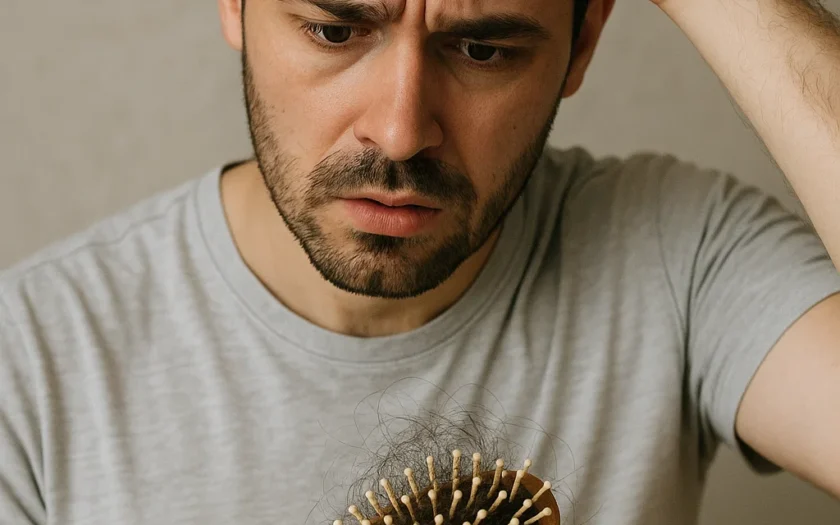Noticing more hair in your brush or on your pillow? You’re not alone. Hair loss affects millions of people worldwide, and it can begin at virtually any age — sometimes gradually, sometimes suddenly. While often considered a normal part of aging, hair loss can have many causes, and understanding them is the first step toward finding a solution.
Understanding the Hair Growth Cycle
Hair goes through a natural cycle of growth, rest, and shedding. At any given time, around 90% of the hair on your scalp is growing, while the remaining 10% is in a resting phase. When that balance is disrupted — due to health, stress, hormones, or other factors — hair loss can occur.
Common Causes of Hair Loss
1. Genetics (Androgenetic Alopecia)
The most common form of hair loss — often referred to as male or female pattern baldness — is hereditary and can begin as early as your 20s or 30s.
2. Hormonal Changes
Hormonal imbalances due to pregnancy, menopause, thyroid conditions, or birth control can trigger hair thinning or shedding.
3. Stress and Trauma
Emotional or physical stress — including surgery, illness, or significant life events — can lead to telogen effluvium, a temporary but noticeable shedding.
4. Nutritional Deficiencies
Lack of essential nutrients like iron, zinc, vitamin D, or protein may weaken hair follicles and slow down growth.
5. Medical Conditions
Autoimmune diseases like alopecia areata, scalp infections, or chronic conditions such as lupus can contribute to hair loss.
6. Medications
Drugs used for treating depression, blood pressure, cancer, and arthritis can sometimes list hair loss as a side effect.
7. Hair Styling Habits
Frequent use of heat tools, harsh chemicals, or tight hairstyles can damage hair over time and lead to traction alopecia.
What Hair Loss Can Look Like
Depending on the cause, hair loss might appear as:
-
Gradual thinning on top of the head
-
Sudden loosening of hair in handfuls
-
Circular or patchy bald spots
-
Full-body hair loss (in cases like chemotherapy)
-
Thinning along the part or temples
What You Can Do
If you’re experiencing hair loss, here are some steps you can take:
-
Consult a dermatologist or trichologist to identify the root cause
-
Avoid harsh hair treatments and opt for gentle products
-
Review your diet and consider nutritional support if needed
-
Manage stress through mindfulness, therapy, or lifestyle changes
-
Track changes in your hair to detect patterns over time
In some cases, addressing the underlying issue can reverse the shedding. In others, medical or cosmetic interventions (like topical treatments or hair transplants) may be considered.
Myths About Hair Loss
-
❌ “Washing your hair too often causes hair loss.”
Not true — as long as you use mild products. -
❌ “Only men lose their hair.”
Women also experience hair loss, often with different patterns. -
❌ “Brushing your hair makes it fall out.”
Brushing removes loose hairs, but doesn’t cause shedding.
Final Thoughts
Losing hair doesn’t mean you’re unhealthy or doing something wrong. It’s a complex issue with many potential causes — some temporary, some long-term. If you’re concerned about your hair, the best step is to seek professional advice and take a holistic look at your lifestyle and health.
Remember: hair is part of your identity, but it doesn’t define your worth. Taking care of yourself inside and out is what truly matters.

